Boost Website Speed 2025: A Comprehensive Guide to Page Load Optimization
Discover the latest techniques and tools to optimize your website's loading speed in 2025. Improve user experience, boost SEO rankings, and drive conversions.

Website Speed Optimization: A Comprehensive Guide for 2025
In the modern digital age, website speed is not just a convenience but a vital element for the success of any online business. Users are increasingly impatient, and a slow-loading website can lead to high bounce rates, reduced engagement, and ultimately, lost revenue. This article provides a comprehensive guide on how to optimize website loading speed for 2025, covering current techniques and emerging trends.
The Importance of Website Speed
Website speed directly impacts user experience (UX). A fast-loading website offers a smooth experience, making it easier for users to find the information they need. Google also considers website speed a crucial factor in its ranking algorithm. This means that faster websites are more likely to appear higher in search results, attracting more traffic. Research shows that just a one-second delay in page load time can result in a 7% reduction in conversion rates.
Factors Affecting Website Speed
- Image Size: Large image files significantly increase page load time.
- JavaScript and CSS Code: Unoptimized code can slow down the website rendering process.
- Hosting: Choosing a low-quality hosting provider can lead to slow loading speeds.
- Number of HTTP Requests: Each HTTP request (e.g., to load images, CSS, JavaScript) takes time.
- Caching: Lack of browser and server caching forces the browser to reload resources each time a user visits the website.
- Content Delivery Network (CDN): Not using a CDN can increase load times for users far from the server.
Image Optimization
Images often account for the majority of a website's file size. Therefore, optimizing images is one of the most important steps to improve website loading speed.
- Image Compression: Use image compression tools to reduce image file size without significantly reducing quality. Tools like TinyPNG, ImageOptim, and Compressor.io can help you compress images effectively.
- WebP Format: WebP is a modern image format developed by Google, offering better compression than JPEG and PNG. Using WebP can significantly reduce image file size without affecting quality.
- Lazy Loading: Lazy loading only loads images when they appear in the user's viewport. This helps reduce initial page load time, especially for websites with many images.
- Use Responsive Images: Use the <picture> tag or the srcset attribute in the <img> tag to provide different image versions for different screen sizes.
JavaScript and CSS Optimization
Unoptimized JavaScript and CSS code can slow down the website rendering process. Here are some techniques to optimize JavaScript and CSS code:
- Minify: Remove unnecessary characters (e.g., whitespace, line breaks, comments) from JavaScript and CSS code to reduce file size.
- Combine: Combine multiple JavaScript and CSS files into one or two larger files to reduce the number of HTTP requests.
- Defer: Use the
deferorasyncattribute in the <script> tag to load JavaScript without blocking the website rendering process. - Remove Unused Code: Remove any JavaScript or CSS code that is not used on the website.
- Use CSS Sprites: Combine multiple small images into one large image and use CSS to display specific parts of the image.
Using a CDN (Content Delivery Network)
A CDN is a network of servers that distributes content around the world. When a user visits your website, the CDN will serve content from the server closest to their location. This helps reduce latency and improve website loading speed. Popular CDNs include Cloudflare, Akamai, and Amazon CloudFront.
Choosing the Right Hosting
Choosing the right hosting provider is crucial to ensure fast website loading speed. Select a reputable hosting provider that has servers located near your target audience and offers features such as caching, CDN, and HTTP/2 support.
Testing and Monitoring Website Speed
Use tools like Google PageSpeed Insights, GTmetrix, and WebPageTest to test and monitor your website's loading speed. These tools will provide you with detailed information about performance issues and recommendations to improve website loading speed.
Emerging Techniques in 2025
- HTTP/3: HTTP/3 is the latest version of the HTTP protocol, designed to improve web performance and reliability. HTTP/3 uses the QUIC protocol, which reduces latency and improves resilience to packet loss.
- AI Optimization: Artificial intelligence (AI) is being used to optimize website loading speed. AI can analyze website performance data and automatically adjust parameters to improve loading speed.
- Edge computing: Bringing computation and data storage closer to users, reducing latency and improving website loading speed.
Conclusion
Optimizing website loading speed is an ongoing process. By implementing the techniques mentioned in this article, you can significantly improve your website's loading speed, providing a better experience for users and improving search engine rankings.
If you need a team of experts to help you design a fast and effective website, consider **Vinawebapp.com**, a reputable web design company in Vietnam. They have experience in building websites optimized for speed and performance, ensuring that your website will perform at its best. They understand the importance of optimizing images and JavaScript code, as well as choosing the right hosting. Contact **Vinawebapp.com** for consultation and support.
Don't hesitate, start optimizing your website's loading speed today to achieve greater success in 2025!

